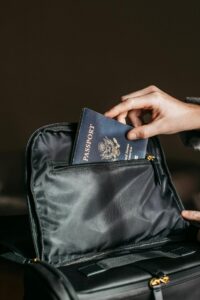Now and then, we see cases of abuse from parents and spouses. Such abuses are even more terrifying when the abused cannot take action because their residence in the United States depends on their relationship with the abuser. The United States authorities offer you an escape route through the VAWA immigration act. This act is a beacon of hope for many people who find themselves in this very dire circumstance. This article covers the step-by-step guide for your VAWA immigration application.
What is VAWA Immigration?
VAWA stands for Violence Against Women Act. As the name signifies, it is an immigration route for victims of domestic violence. However, despite its name, the law does not target women alone. Therefore, you do not need to be a woman to qualify for this kind of immigration.
VAWA immigration is a law that gives victims of domestic abuse the right to self-petition for an American Visa. However, applicants must meet certain conditions to apply for this visa. As a general overview, applicants must be the abused child or spouse of a United States citizen. The law also extends to spouses or children of permanent residents in the U.S.
The VAWA immigration law allows qualified applicants to apply for permanent residence in the U.S. without the help of their abusive spouse. Unlike most other types of dependence visas, you do not need to rely on your spouse to file for this one on your behalf. Instead, the law gives you eligibility to apply for your green card by yourself.
The VAWA Immigration Application Process
Now that we’re clear on explaining what the VAWA immigration law is, here’s how to apply. Here’s a step-by-step process on how you can go about filling out your VAWA immigration application.
1. Consult an immigration lawyer
The most logical first step in applying for any visa is to consult an experienced lawyer. An experienced lawyer will help you review your case and tell you your chances. In this case, they’ll tell you whether you qualify for the VAWA immigration application. They’ll also tell you whether this type of immigration is the best for you. In case it’s not the best, they can recommend other routes that you may not be aware of. So, your discussion with an experienced immigration lawyer will only help you decide whether VAWA is the best route for you. It’ll also open your eyes to all available options.
2. Collect and fill out the form I-360
The next important step is to collect and fill out the USCIS Form I-360. In fact, this is a compulsory step at this stage. But before collecting and filling out the form, you must send documentary evidence to show that you meet all eligibility requirements.
The Form I-360 is used for different types of applications. So, you’ll need to complete all the sections of the form to clearly signify what application type you’re choosing. For the most part, this form is pretty straightforward and easy to fill. However, there are a few things to note:
- The form allows you to replace your address with another person’s address because of the tendency of an abusive partner to find out about your application. However, if you’re no longer living with the abusive partner, you can use your address since all correspondence will be sent to that address. The USCIS will send all notices to the stated address. We also recommend choosing an address to which you can receive mail in the future.
What to Include With Form I-360
As you’ll see in the form, there are a few documents you’ll be required to attach to Form I-360 while filling out your VAWA immigration application. They include:
- A declaration that describes your relationship with the abuser. The declaration must also clearly state the kind of abuse you suffered and any other thing relevant to prove eligibility
- A police clearance record that shows your criminal records, or lack thereof. The police record should also show any other evidence of your good moral standing
- Any other available evidence that proves your case of abuse
- Proof of your relationship with the spouse (birth or marriage certificate)
- Proof that you’re currently a resident in the United States
- Proof that you’re living or dependent on the abuser
Submitting the VAWA Immigration Application Forms
You’ll find all the instructions you’ll need to submit this form on the I-360 page of the USCIS website. Once the USCIS receives your VAWA immigration application, they’ll send a notice that shows they’ve received the form to the address. They’ll then review your VAWA immigration application to see whether you’re truly eligible for the visa. If, for any reason, more evidence is required, the USCIS will send a letter to the stated address requesting it.
The Coleman Law Group Can Help You
The whole process of filling out a VAWA immigration application can be very complex. That’s why we always recommend having an experienced lawyer on your side throughout the VAWA immigration application process. The team at the Coleman Law Group are well experienced in matters relating to the VAWA immigration application. So you can expect us to handle is as effectively as possible. Contact us today to learn more about how we can help you.



